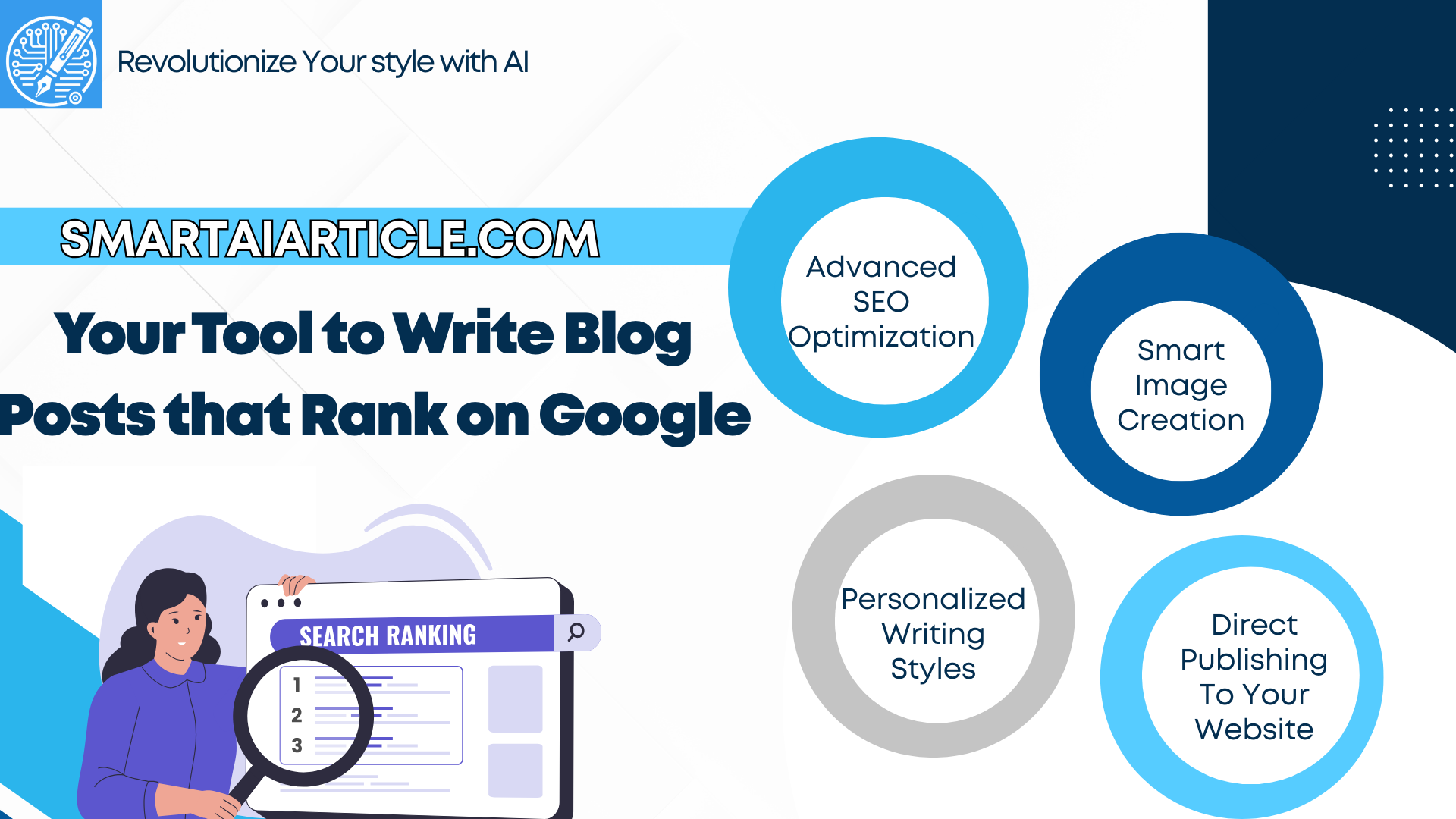Blogging today is no longer just a hobby; it has become a main career for many people. Whether you are a professional blogger, a content creator, or just a newbie, the common goal is to make the article appear at the top of Google search results. Yet not everyone can easily achieve that. Some struggle for months without results, while others master it quickly. The difference lies in strategy and how you create your content. In this article, let's explore how to write blog posts that rank on Google in 2025. Stick around until the end to uncover the secret writers often ignore.
Why Ranking on Google Matters for Your Blog Post?
For years, Google has been the first door whenever people need to find information. With over 16.4 billion searches daily, it remains the most popular search engine worldwide, where users look for solutions, answers, and products they care about. That is why showing up on Google means putting yourself in front of a massive audience.
However, just appearing on Google is not enough; your position is what truly matters. Studies show that about 75% of users never scroll past the first page of Google. If your blog does not rank high, readers will rarely find you. This means that all your time and effort go down the drain. The higher your post ranks, the more organic traffic you attract, and the stronger your brand authority becomes. In short, Google is a goldmine for growth, but only for articles that rank.
So, how can you get your blog onto Google’s first page? Is great content enough, or are there other factors at play? Let’s break it down in the next section.
How to Write Blog Posts That Rank on Google
Writing a blog post is not difficult, but making it visible to a wide audience is the real challenge. Ranking high on Google is not about content or tricks alone, but a balanced combination of strategy, creativity, and SEO knowledge. Below are important factors to help your article rank at the top of Google search.

1. Understand User Intent
Google does not work on emotional guesses. Writing based on random guesses makes your content more likely to fail. Before you start writing, it is important to understand user intent. User intent is the motivation or purpose behind each search keyword. For example, if someone searches for “how to make pizza at home,” they want to see a detailed and easy-to-follow recipe, not a general introduction to pizza. So, before writing, always ask yourself:
- Who am I writing for?
- What are they searching for?
When your content directly answers readers’ needs, Google will see your post as the best answer and reward it with higher rankings.
2. Choose the Right Keywords
Keywords are the bridge between your content and searchers. If you wish to write blog posts that rank on Google, you need to target the right keywords so that Google understands your post and displays it in relevant searches. Start by researching what your target audience is looking for and connecting those queries with your blog topic. Do not just stop at a primary keyword; expand with secondary and long-tail keywords. Long-tail keywords may have lower search volume, but they are less competitive and usually bring in higher conversions because they reflect user-specific needs.
3. Write Human-Centered Content
You reach users with text content, so the content quality is the most important factor for ranking. On Google, you must always write for people first, then optimize for search engines. Cover what your readers truly need, not just what you want to say. When drafting and editing, put yourself in the reader’s shoes and ask:
- Is this content easy to understand?
- Is it clear and well-structured?
- Is it engaging enough to keep them reading?
If the answer to any of these is “no,” it is time to refine your content.

4. Structure Your Content for Readability
Great content only shines if it is easy to read and understand. Adjust your writing style depending on your target audience and search intent. For an expert audience, in-depth analysis and detailed insights build trust. For beginners, a simple, friendly, and easy-to-follow style works better. In addition, structure also plays a big role. No one likes scrolling through a wall of text. Make your blog scannable by:
- Divide the article into short paragraphs of 2-3 sentences.
- Using subheadings to organize ideas.
- Adding bullet points for lists.
5. Optimize for SEO
For an article to reach the top, you must also optimize your content for search engines. Here are the essentials:
- Allocate primary and secondary keywords naturally.
- Use keywords in titles, headings, and meta descriptions.
- Create clean, SEO-friendly URLs.
- Add descriptive alt text for images.
- Build a balanced mix of internal and external links.
When you combine all these factors, your article will attract readers and be prioritized by search engines to display in high positions.
New Blogging Trends in 2025
In recent years, AI has transformed the blogging world, becoming a powerful assistant that makes writing SEO-friendly articles faster and more efficient. Gone are the days when writers had to do everything from research to writing, editing, and SEO optimization. Today, SEO content generator tools can do this job for them.
AI not only supports coming up with ideas but also analyzes keywords, produces articles, and optimizes them to meet Google’s SEO standards. New-generation AI tools are so advanced that their writing feels natural and human-like, allowing businesses to save significant time and reduce costs in content creation.
Another growing trend is content personalization. Readers no longer want generic information; they expect articles that speak directly to their needs and situations. Multiple writing tools let you choose a writing style, target audience, and countless customizations to ensure your content perfectly fits your goals. In short, blogging in 2025 is no longer a playground only for traditional writers. It is about combining human creativity with artificial intelligence.
Smartaiarticle.com – Your Tool to Write Blog Posts that Rank on Google
If you want to keep up with the trend of using AI in blogging, SmartAiArticle is a tool worth considering because of the following outstanding features:

1. Advanced SEO Optimization
SmartAiArticle integrates advanced algorithms to turn your topic into a high-quality article that meets Google’s SEO standards. Once you enter your topic, SmartAiArticle automatically suggests the right keywords and distributes them naturally throughout your content. It also recommends SEO-friendly titles, meta descriptions, and headings. If you want your post to look more engaging and easy to follow, you can freely add quotes, tables, or FAQs with just a few clicks. With these features, Smartai makes it easier to write blog posts that actually rank.
2. Smart Image Creation
Images play a vital role in clearly illustrating your article. SmartAiArticle gives you flexible options to generate images that match your content perfectly. You can add photos with various styles and sizes without wasting time searching or designing. Moreover, SmartAiArticle also integrates the option to add main and related keywords to the image Alt-text. This improves both SEO and user experience, which helps your blog rank higher on Google.
3. Personalized Writing Styles
Keeping up with the trend of content personalization in 2025, SmartAiArticle enables you to tailor content to different styles to suit each audience, including informative, descriptive, creative, narrative, persuasive, and more. You can also pick writing tones and perspectives to align with your brand and audience. What sets this tool apart is its target-country option. Each market has its own language nuances, and SmartAiArticle ensures your content feels natural, relevant, and authentic to readers in any country.
4. Direct Publishing To Your Website
SmartAiArticle stands out from other writing support tools like ChatGPT, Gemini, or Grok thanks to its ability to publish articles to WordPress. Instead of manually copying and pasting content, this tool allows you to post directly to your website with just a few clicks. This makes the process of writing, editing, optimizing, and publishing smooth, saving time while ensuring quality.
Hopefully, this article has given you a clear understanding of how to write blog posts that rank on Google to reach a wider audience. In 2025, blogging is no longer just about writing; it is about combining smart SEO strategies with the power of AI. Embracing new AI trends is no longer optional; it is essential. Start today with SmartAiArticle to simplify your blogging process.
Thank you for taking the time to read this article!
If you have any questions, please contact us at SMARTAIARTICLE.


.png)

